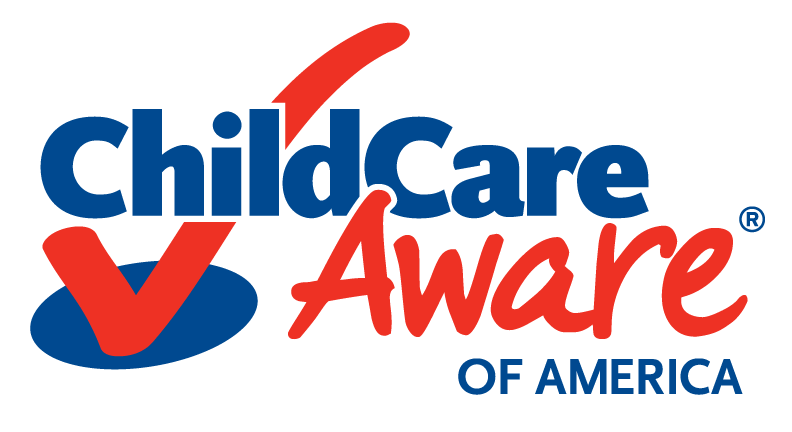Opening a Child Care Center: Action Steps
Once you’ve done your research, you can begin taking steps towards starting your child care center. The sections below provide vital information and helpful resources for every step of the way.
-

Prepare a Budget
Preparing a budget gives you a picture of whether your projected income will meet your expected expenses. You will need to think about how many children you plan to serve, tuition fees, staffing costs, start-up costs such as application fees, equipment, materials, marketing, and other items you may need to purchase before your child care is even open.
Use the budgeting worksheet below to help you think through how much cash you expect to come into your business compared to how much cash you expect to spend. Your business plan will help you define how much money you will need to start your business. You may be eligible for loans or grants to get you started.
Explore Funding Opportunities
Check with your local Child Care Resource and Referral (CCR&R) agency for ideas on possible funding opportunities to open or sustain your business. The most common federal sources of funding for child care include:
- The Child and Adult Care Food Program (CACFP) is a food reimbursement program that allows qualified child care providers to be reimbursed for a portion of their child care food costs.
- The Child Care and Development Fund (CCDF) is a federally funded grant to states to support child care subsidies. Our State by State Resources Map can connect you to your local program.
- The U.S. Small Business Administration (SBA) offers a wide variety of information on loans, grants, and other funding opportunities for small businesses.
- Existing child care centers can review CCAoA’s Cash Options for Providers During the Pandemic resource for information on financial assistance to support your business during COVID-19.

Pandemic Consideration: When preparing your budget during the pandemic, be sure to include the cost of extra cleaning and safety supplies, such as bleach, paper towels, sanitizing wipes, masks, gloves, smocks, and thermometers.
Budget Worksheet -

Find a Location
Once you have determined there is a need for child care in your area, think about finding a location for your child care business. Check with your state licensing office to learn more about the specific requirements in your area before you start your search for a location for your child care center.
Before you buy, rent, or build a space for your child care business, check your local zoning laws and covenants to make sure you follow local laws. If you decide to buy a franchise, the parent company may have specific guidelines regarding where you can locate your child care business.
Check Zoning Laws
Zoning laws may limit small businesses in your community. They can set restrictions and charge fees for permits for the businesses they do allow. Local governments pass zoning laws to make sure businesses fit in the local community and can be used to keep most business activities out of residential areas. These laws may affect where you can locate your child care business.
If zoning laws do not allow businesses, you cannot open a business unless you get a variance (an exception to the law). This is true even if a child care program meets all state licensing requirements.
Check with the local government in your area or call your local Child Care Resource and Referral (CCR&R) agency to find out about zoning regulations.
Check Restrictive Covenants
If you want to locate your child care business in a residential setting, check to see if there are any restrictive covenants before you rent or purchase the property. Housing developers can include restrictive covenants in deeds and homeowners’ association agreements. These restrictive covenants may limit business activity in the community. The homeowners’ association will have information on any restrictions. If you rent your property, you will need to check with the property owner or your community’s homeowners’ association about any rules.
If covenants do not allow businesses, you cannot open a business unless you get an exception. This is true even if a child care program meets all state licensing requirements.
Evaluate the Space
Once you’ve found the perfect location, you need to evaluate the space surrounding your location to make sure it is suitable for child care. Because each state has different regulations, check with your local Child Care Resource and Referral (CCR&R) agency and your state licensing agency for more information.
Evaluate Your Space -

Develop Policies and Procedures
It is important to outline your policies and procedures for operating your child care business for your employees and families. It is also important to have your policies and procedures reflect the Code of Ethical Conduct for the early childhood field.
Your policies and procedures will include a number of important topics and are designed to help your business run smoothly. Many states require you have written policies for families. Check with your state licensing agency or your local Child Care Resource and Referral agency to find out what you need to include.
Family Handbook
The handbook outlines your program’s policies and procedures and includes other important information for families. Encourage families to read the handbook and ask questions.
Family handbooks often include the following topics:
- Mission and philosophy of your program.
- Description of your program, including your operating hours and the ages of children you serve.
- Information on whether your program is part of your state’s Quality Rating and Improvement System (QRIS) or nationally accredited.
- Information on when payment is due and policy regarding late payments.
- Description of the curriculum and daily schedule for children.
- Description of family involvement activities.
- Required forms for families to complete such as the registration form, health forms, medication administration forms, emergency contact information, and field trip permission forms.
- Information on policies regarding communication with families, guidance and discipline, drop-off and pick-up procedures, emergency closings, fee and payment arrangements, food and nutrition, program closings, and transportation policies.
- Description of your disaster and emergency plans – this manual from the National Center on Early Childhood Health and Wellness can help you develop your plan.

Pandemic Consideration: Consider the following COVID-19-related additions to your Family Handbook: drop-off and pick-up procedures, daily health screenings and temperature checks, updated sick policies, no visitor policy, tuition policy during temporary closures, etc.
Staff Handbook
The staff handbook outlines the expectations you have for your employees. If you want your staff handbook to be a binding agreement between you and your employee(s), make sure you review it with each staff member. Consider having them sign a document stating they read and understand the contents.
The following topics are often included in staff handbooks:
- Mission and philosophy of your program
- Benefits and pay scale
- Job descriptions, evaluation procedures, and hiring and termination policies
- Information on child abuse prevention, identification, and requirements for reporting
- Child behavior and guidance policies
- Health and safety procedures
- Family communication and involvement
- Professional development requirements
Staff Handbook Template
Pandemic Consideration: Consider the following COVID-19-related additions to your Staff Handbook: daily health screenings and temperature checks, PPE requirements, sick leave policy to care for a loved one due to COVID-19, staff retention during temporary closures, etc.
-

Hire Staff
Most states have requirements regarding minimum education and experience qualifications for child care providers and ratio requirements. It is important to contact your local Child Care and Resource Referral (CCR&R) agency or your local licensing agency to understand the minimum qualifications needed to be a child care provider.
Provider Qualifications
Because requirements vary state by state, check with your local Child Care Resource and Referral agency or your state licensing agency for minimum qualifications for child care staff. Generally, these requirements for staff include:
- Minimum age, usually 18 years
- High school diploma or equivalent
- Initial and ongoing training
Provider Training Options
You may want to earn additional qualifications in order to prepare yourself to work with children. Child Care Aware® of America recommends all family child care providers and staff have at least 40 hours of initial training, including CPR, first aid and other basic safety and health training, and training on child development; and 24 hours of annual training. Check out trainings provided through your local Child Care Resource and Referral agency and local universities if you are interested in or need additional training hours.
You may also want to think about earning a degree or credential in the early childhood field. One option is the Child Development Associate (CDA) credential. The CDA is a nationally accepted early childhood credential awarded by the Council for Professional Recognition. There are different options to earn your credential, including taking classes with an instructor or online.
Staffing Needs and Ratios
The minimum number of staff you need depends on the ages and number of children in your program. Your state licensing regulations will have very specific requirements on:
- Staff-to-child ratios, or the number of staff needed for a specific number of children
- Group size, which is the maximum number of children allowed in the group
- The number of usable square feet in your home, which dictates how many children you can serve
Best practice recommendations for ratios and group size for a child care center:- 0-12 months: 3-4 children per caregiver, max group size of 8 children
- 13-23 months: 4 children per caregiver, max group size of 8 children
- 2-year-olds: 4-6 children per caregiver, max group size of 12 children
- 3-year-olds: 7-9 children per caregiver, max group size of 18 children
- 4- and 5-year-olds: 8-10 children per caregiver, max group size of 20 children
- 6- to 8-year-olds: 10 children per caregiver, max group size of 20 children
- 9- to 12-year-olds: 12 children per caregiver, max group size of 24 children
Check with your local Child Care Resource and Referral (CCR&R) agency and your state licensing agency to learn more about specific ratio and group size requirements in your state.

Pandemic Consideration: Many states have required or recommended smaller ratios and/or group sizes during the pandemic. Be sure to take this into consideration when evaluating your staffing needs. For information on your state’s current operational guidance for child care, visit our State by State Resource Map and click on your state.
-

Market Your Program
Developing a marketing plan will help you think about why families should choose your program over other child care providers in your community. It also gives your program a sense of identity or brand. Contact your local Child Care Resource and Referral (CCR&R) agency for help in creating your marketing plan. Many CCR&Rs offer trainings specifically on this topic.
Know Your Mission
Think about what makes your program unique and how it can meet the needs of children and families. What benefits beyond the hours of operation and the ages of children you plan to serve will you offer to families? Think about how your program will meet the needs of children and families.
Understand the Child Care Market
Use the findings from your needs assessment to help you answer questions about the need for family child care in your area, which age groups need care, and where parents live and work.
Know Your Competitors
It’s important to know who else is providing family child care services in your area. If possible, visit other child care programs to get a sense of what they offer to children and families. Use this resource to help you compare the programs in your area.
Target Your Audience
Consider all the ways you can reach parents in your community. Think about where parents are likely to look for information, and reach out to other businesses to get the word out about your program. Also, think about what type of families would benefit the most from your program. Ask your local Child Care Resource and Referral (CCR&R) agency for help in reaching your target audience.
Develop Strategies
Think about the different strategies you can use to attract parents to your program. You may want to create a logo or a sign in front of your child care business for prospective parents, develop a social media presence, and distribute brochures/flyers about your program. Whatever strategies you develop, think about the budget you may need for each strategy.
Marketing Strategies Budget and Timeline
Set Objectives
Implementing your marketing plan is a big step, but you also need to evaluate your plan to know what types of strategies work for you.
Create the Plan
Your marketing plan should highlight the unique aspects of your program, including your strategies to attract families to your program and your marketing budget. You should market your program whether you are just opening or if you have been open for years.
Marketing Plan
For the best results, be sure to download and save the resources provided above. Doing so will allow you to complete the forms from your computer or mobile device.
These resources and more are also available in our Child Care Center Resources E-Book.







